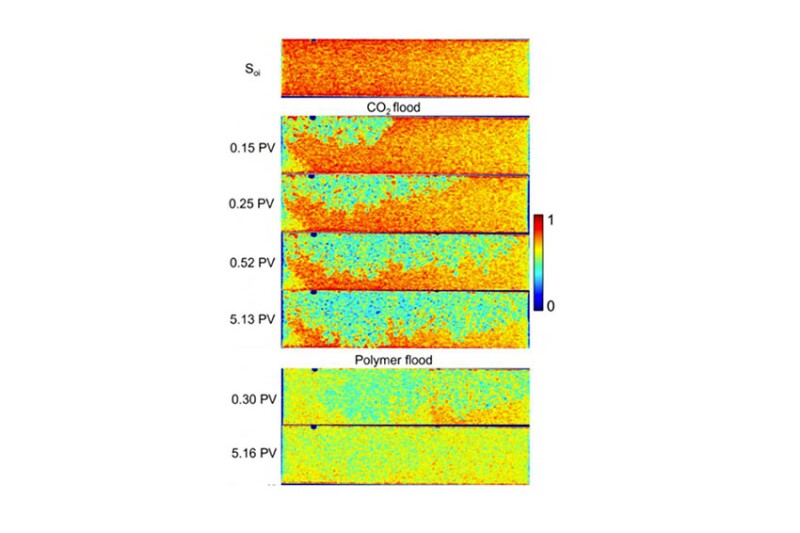CO2 flow in porous media is vital for both enhanced oil recovery and underground carbon storage. For improving CO2 mobility control and improved reservoir sweep efficiency, water-alternating-gas (WAG) injection often has been applied. The effectiveness of WAG diminishes, however, because of the presence of microscale reservoir heterogeneity that results in an early breakthrough of gas. In the complete paper, the authors propose polymer-assisted WAG (PA-WAG) as an alternative method to reduce gas mobility and the mobility of the aqueous phase, consequently improving the performance of WAG. In this method, high-molecular-weight water-soluble polymers are added to the water slug.
Introduction
Recently, PA-WAG has received attention as a method to mitigate early gas breakthrough and gravity segregation during WAG injection.


